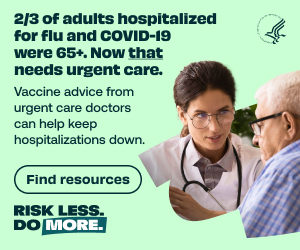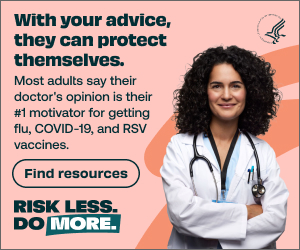How responsible are emergency physicians for opioid addiction? A couple studies shed important light on the subject.
We’ve all been inundated with news about the prescription drug epidemic in the United States and its effect on heroin use and addiction. Really, the question is not whether or not you are aware of this problem but how many times a day it gets brought to your attention. The scope of the problem is enormous, and as physicians we need to understand the impact of our prescribing habits.
Just as with rising healthcare costs and other health system ills, emergency medicine has received more than its share of blame for the prescription drug crises [1]. Recently published studies aim to review this link.2,3 These studies are not perfect, and their titles, taken out of context, insinuate that emergency medicine is the problem. That said, there is still plenty we should learn from them.
A new publication in The New England Journal of Medicine explores individual prescribing habits in the emergency department in an effort to associate them with long-term use (addiction) and adverse complications [2]. Understandably, it has received lots of attention in the media [4,5]. The authors reviewed evaluation and management claims data for a national sample of Medicare patients treated and discharged from the emergency department (ED) that received a prescription for opioids. To be eligible, patients could not receive an opioid in the six months prior to the ED index visit. In addition, patients on hospice or diagnosed with cancer were excluded. All patients were then followed for the next 12 months to track if the initial index visit resulted in long-term opioid use (>180 days in the next 12 months) or a hospital admission related to opioid use. Each ED visit (and therefore discharge prescription) was assigned to an ED physician based on their National Provider Identifier (NPI). Physicians with fewer than five visits or small groups with fewer than five physicians were excluded from the analysis. Physicians at each hospital were then divided into “high-intensity” providers (top quarter of their group) and “low-intensity” providers (bottom quarter of their group) by the number of prescriptions they wrote. As an alternative way to view their prescribing habits, physicians were also divided into quartiles based on the median dose of opioids they prescribed.
High vs. Low Intensity Prescribers
In all, low-intensity providers treated 215,678 patients and high-intensity 161,951 patients. Patients treated by high-intensity and low-intensity providers were similar in baseline characteristics including age, sex, race, disability, and co-morbidities. Shockingly, high-intensity providers were 3.3 times more likely to prescribe opioids than low-intensity providers within the same department (7.3% vs 24.1%, p<0.001). There was minimal correlation between prescribing rates and median dose (r=-0.08), so high prescribers were not necessarily writing for less pills per prescription than low-intensity providers in order to make up for the extra prescriptions or vice-versa. Long-term opioid use at 12 months was higher among patients treated by high-intensity prescribers compared to low-intensity prescribers (1.51% vs. 1.16%; odds ratio, 1.31; 95% CI 1.24-1.39). This corresponds to a number needed to harm of 49; in other words, for every 49 prescriptions written, one resulted in long-term opioid use. When prescribers were divided by median dose as opposed to total prescriptions, a similar trend was discovered. In addition, this pattern was similar among numerous subgroup analyses. Hospitalizations due to falls or fractures for patients treated by high-intensity providers compared to low-intensity providers were higher (4.56% vs. 4.28%; OR 1.07, 95% CI 1.03-1.11, p<0.0001), although only by a small amount. Short-term ED revisits at 14 and 30 days, where patients were given the same diagnosis as the index visit, were the same between high-intensity and low-intensity groups, suggesting that patients in low-intensity groups did not have to return more often due to inadequately treated pain.
This study is not perfect. Data was tracked in a retrospective fashion using claims data allowing for some chance of error. While the authors used emergency physicians, discrepancy in prescribing habits is not unique to our profession. In addition, while an ED physician wrote the initial prescription, someone else had to continue to prescribe opioids to the patient. While diagnosis inertia does exist, at some point someone else is responsible for continuing down that path. This study also cannot answer the question of why there was a large difference between prescribing habits, if the prescriptions were reasonable, or if there is an alternative explanation for this discrepancy aside from inappropriate prescribing practices.
Practice Variation
With that said, this study demonstrates that emergency physicians have significant variation in opioid prescribing practices. You can’t just explain this away by saying some of us see sicker patients. Given the large volumes, the randomness of presentations, and that most physicians in the same department see similar samplings of patients, these results are unlikely to be due to anything but an unacceptable level of practice variation.
Additionally, you probably can’t say that the difference between low- and high-intensity providers is that the low-intensity EPs are under-treating pain. Groups need to be reviewing their practice to see if better education, improved hospital support, or prescribing guidelines can better prevent both under and over treatment.
This discrepancy becomes even more impactful if ED prescribing is associated with misuse and ‘iatrogenic’ addiction [3]. In a recent Annals of Emergency Medicine Study, researchers surveyed a convenience sample of ED patients in an urban academic teaching hospital with self-reported heroin or nonmedical prescription opioid misuse. Patients were found by reviewing the medical record for chief complaints that could indicate drug use (i.e. overdose, abscess), staff referral, or randomly approaching patients between the ages of 18-40. Of the 122 people approached, only 59 completed the survey. Fifty-nine percent (35/59) reported their initial exposure was from a legitimate prescription used as directed; ten of these patients reported that the ED was the source of the initial prescription. Disturbingly 80% (28/35) reported nonopioid substance use or disorders prior to receiving the prescription for opioids. For 25 of these patients, the median time from initial exposure to nonmedical opioid use to get high was six months. The median time from the initial prescription “using to avoid withdrawal” was just 18 months.
Studies: Imperfect but Important
There are some major limitations to this study. It only included a small cohort of patients presenting to a single medical center. In addition, there may have been a significant amount of recall bias given that there was no way to verify the ED prescriptions or those from other physicians truly preceded opioid misuse. Clearly, other genetic and societal factors also play an important role in addiction, and the pathophysiology of addiction is much more complex than saying a single prescription caused the disorder. It also doesn’t mean the initial prescription was inappropriate just because the patients had a very unfortunate outcome.
However, this is not the only study to draw similar results. Other authors also associated opioid use for acute pain with long-term use [6,7]. A prior ED-based study concluded that opioid-naïve patients given a prescription for acute pain were at an increased risk for additional opioid use at one year [8]. The CDC’s Morbidity and Mortality Weekly Report in March 2017 concluded that the likelihood of chronic opioid use following receipt of an opioid prescription increased each day starting on the third day of the prescription [9]. This study was a review of a random sample of opioid-naïve, non-cancer patients in the IMS Lifelink+ database and included over a million patients. The probability of long-term use increased sharply after five days of use with 6% of patients that received at least one day of opioid therapy still using opioids after a year, even though nearly 70% initially received a prescription for seven days or less. Initial treatment with tramadol was also associated with long-term use.
Even with their limitations, the significance of these studies cannot be denied. Providers should discuss the addictive potential of these medications prior to writing a prescription. Additionally, consider asking about a history of personal or familial drug use prior to giving a patient a prescription for potentially addictive medications. Addiction clearly is not solely the responsibility of, or fault of emergency providers. However, we do play a role and need to make sure that we prescribe responsibly, not just to limit diversion, but also due to the risk of ‘iatrogenic’ addiction.
REFERENCES
- Cooper Z, Morton FS. Out-of-Network Emergency-Physician Bills-An Unwelcome Surprise. N Engl J Med 2016;375:1915-18.
- Barnett et al. Opioid-prescribing patterns of emergency physicians and risk of long-term use. N Engl J Med 2017;376:663-73.
- Butler et al. Emergency department prescription opioids as an initial exposure preceding addiction. Ann Emerg Med 2016;68:202-08.
- Emery G. Wide Variation in Willingness of ER doctors to prescribe painkillers. http://www.reuters.com/article/us-health-painkillers-emergency-rooms-idUSKBN15U2SI. Accessed on March 15, 2017.
- Hoffman J. Long-Term Opioid Use Could Depend on the Doctor Who First Prescribed It. https://www.nytimes.com/2017/02/15/health/long-term-opioid-use-doctors-prescriptions.html. Accessed on March 15, 2017.
- Alam A, et al. Long-term analgesic use after low-risk surgery: a retrospective cohort study. Arch Intern Med 2012;172:425-30.
- Clarke H, et al. Rates and risk factors for prolonged opioid use after major surgery: population based cohort study. BMJ 2014;348:g1251.
- Hoppe JA et al. Association of emergency department opioid initiation with recurrent opioid use. Ann Emerg Med 2015;65(5):493-99.
- Shah A, et al. Characteristics of Initial Prescription Episodes and Likelihood of Long-Term Opioid Use-United States, 2006-2015. MMWR Morb Mortal Wkly Rep 2017;66:265-69.










7 Comments
NONE as long as hospitals continue to pay patient satisfaction PR/PC
firms lik The Stupid Group/Press Gagme to try and corrupt & incentivize ERP’s to become candy men/candy women
Great summary and perspective. It reminds me to stay vigilant about my own prescribing habits and the importance of avoiding narcotic use when appropriate and limiting opioid prescriptions to a few doses or a couple of days when appropriate. I would like to be a low intensity prescriber.
In residency 2 decades ago we were reminded of our cruelty of undertreating pain in the ED. After some nitwit in NY sang the praises of opiates for chronic non-cancer pain, it became the 5th vital sign of the Joint Commission, and every ED physician outside of academia feared the wrath of the hospital administration. Poor Press Ganey scores and bogus patient complaints – enabled by hospital “patient advocates” forced ED docs to choose between taking a stand and feeding their families.
Hmm. Another “academic” study throwing ED physicians under the bus. Let me know when they take aim at the orthopedist, the rheumatologist, etc who act as candymen as well. Better yet, ask the “pain management specialists” why they aren’t managing pain.
Bull Twinkies. Anyone else find these studies helpful or even meaningful? Did I get this right? We addict one in almost 50 patients because we have an “unacceptable” practice variation? What’s an acceptable level? Is there an art to Medicine or is it just a cook book? The lawyers must be salivating; literature proven cause of damage. What happened to the studies that produced the “fifth vital sign”.
Research exploring opioid abuse associative and causative factors linked to ED prescribing are desperately needed – and these studies begin to do so, but they are hardly conclusive. As a specialty, emergency medicine must be cognizant of the national epidemic of opioid addiction and addiction-related deaths (see http://mocep.org/2017/01/opioid-epidemic-debatable-emergency-medicine-culpability-proactive-problem-solving/). ACEP also has a Clinical Policy for opioid prescribing (http://www.sciencedirect.com/science/article/pii/S0196064412006373). Acute pain management recommendations over the last two decades have emergency physicians ducking between the swing of the pendulum as we tried to eliminate all pain as the 5th vital sign and now confront a possible unintended consequence of those efforts.
Well-done, Evan! Thanks for publishing this essay EP Monthly! The balance between sufficient pain control and primum non nocere will remain a challenge for many years to come.
Thanks Chris. Completely agree. None of these studies are anywhere near conclusive and all have significant limitations but hopefully will at least lead some to reflect on their prescribing practices and make changes as they see fit. EM physicians, and I’d assume others, are caught in this seemingly no-win situation.
There is a severe “opioid crisis” which is predominantly heroin, followed by illicit synthetic opioids from China containing fentanyl derivatives. Then there is methadone, long-acting opioids, and tramadol much of which is either illicit or illegally diverted. Next, there is combination opioids (“Lortab” & “Percocet”) which is illegally diverted, followed by large monthly scripts monitored by chronic pain physicians and primary care physicians. The idea that emergency medicine physicians who prescribe a handful of “Lortab” for an acute objective painful condition (broken bone, kidney stone, epididimitis,) lead some patients to a life of injecting illegally acquired heroin defies common sense and good scientific data. The very small retrospective studies cited are confusing causation with correlation.
What is true is there are a lot of persons with “addictive personalities” who get injuried; and there are even more people with CHRONIC pain with no doctors or no resources who show up in your ED (“they just moved here”). This population of people are very complex and run the gamut of multiple tragic psychosocial problems to outright deception. This is the population with a variety of prescribers (high and low intensity) and a lot of tramadol because of its complexity and uncertainty. If there is overlap between the “opioid crisis” and ED docs prescribing small prescriptions of combination opioids, it is here.
The conclusion by most writers that we have found the enemy and it is us.The idea that responsible ED physicians play a significant role in the US opioid crisis is untrue. They are confusing causation with correlation. And they are not distinguishing between 1)the national opioid crisis 2) chronic pain patients (many of which go to the ED) and 3) the responsible (and finally adequate) response to acute objective painful conditions in the ED. These three distinct categories are all important but have not been adequately delineated in discussing “emergency medicine and the opioid crisis.”